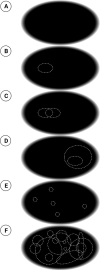Consciousness and the fallacy of misplaced objectivity
- PMID: 34667639
- PMCID: PMC8519344
- DOI: 10.1093/nc/niab032
Consciousness and the fallacy of misplaced objectivity
Abstract
Objective correlates-behavioral, functional, and neural-provide essential tools for the scientific study of consciousness. But reliance on these correlates should not lead to the 'fallacy of misplaced objectivity': the assumption that only objective properties should and can be accounted for objectively through science. Instead, what needs to be explained scientifically is what experience is intrinsically-its subjective properties-not just what we can do with it extrinsically. And it must be explained; otherwise the way experience feels would turn out to be magical rather than physical. We argue that it is possible to account for subjective properties objectively once we move beyond cognitive functions and realize what experience is and how it is structured. Drawing on integrated information theory, we show how an objective science of the subjective can account, in strictly physical terms, for both the essential properties of every experience and the specific properties that make particular experiences feel the way they do.
Keywords: consciousness; contents of consciousness; functionalism; integrated information theory; space.
© The Author(s) 2021. Published by Oxford University Press.
Conflict of interest statement
None declared.
Figures



References
-
- Bisiach E, Luzzatti C. Unilateral neglect of representational space. Cortex 1978;14:129–33. - PubMed
-
- Block N. Perceptual consciousness overflows cognitive access. Trends Cogn Sci 2011;15:567–75. - PubMed
-
- Block N. Rich conscious perception outside focal attention. Trends Cogn Sci 2014;18:445–7. - PubMed
LinkOut - more resources
Full Text Sources
